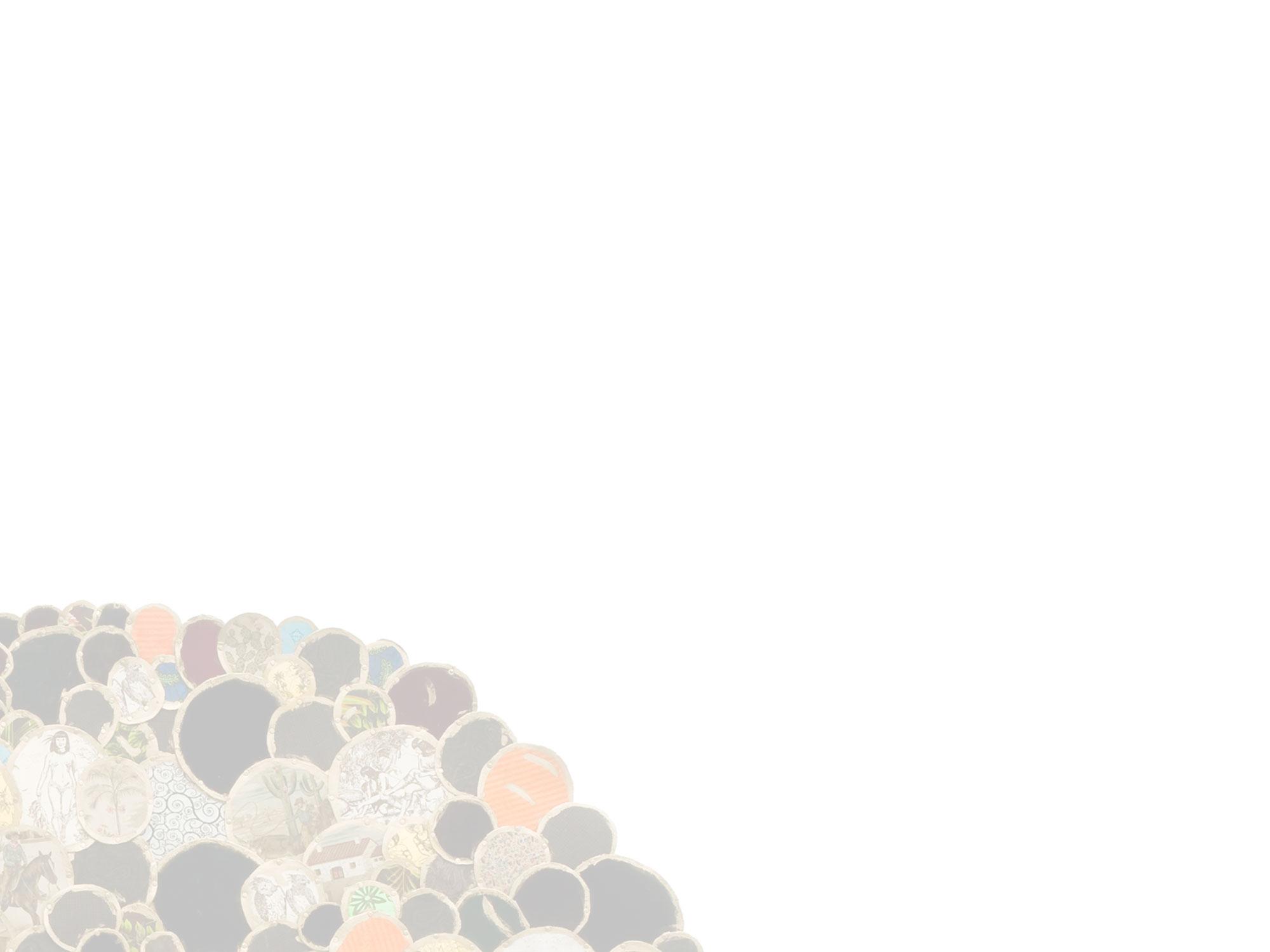Tadeu Chiarelli - Leda Catunda`s Planes / Catalogo expo Ramis Barquet
23/06/2001
One of Brazil`s most important artists, Leda Catunda has always been outstanding for her production of artworks that seek to fray the modern concept of painting to its utter limit.
Already in the vedações [blotting-outs] that she did early in her career, Leda was demonstrating her resolution not to work with the conventional canvas. To make them the artist sewed together some modules of printed fabrics bearing comic-book characters from Brazil and abroad. Once she had brought these modules together into a `canvas` without a stretcher, Leda blotted over the printed images with acrylic paint, allowing only certain portions to show. Those planes, half soft and half stiff with the acrylic paint, challenged the conventional `good painting,` alternating rhythms of colors between the monochromatic blots. Even in her paintings where she developed a strong narrative tendency in her search for the archetype, Leda`s discomfort in relation to the possibility of a merely planar painting in keeping with tradition was patently obvious.
Leda developed this poetics because already in the `80s she knew how to synthesize two powerful influences, apparently antagonistic and mutually exclusive: on the one hand, the entire critical approach to modern painting she had inherited from her professors; on the other, the avalanche of information about a `return to painting,` which profoundly marked her generation.
Synthesizing these two streams, the artist pointedly questioned modern painting, producing artworks wherein the limits of the pictorial plane were always problematized either by the use of uncommon materials (velvets, plastics, plush, and so on) or by the surfaces of her paintings being voluminous and/or emptied. This intense questioning that she has been carrying out over the last twenty years is what has made Leda`s work one of the most instigating within the scene of Brazilian contemporary art.
The artworks she is presenting in this exhibition are the result of a process of maturing that her production has been going through recently. In them one can perceive practically all the questions that Leda has dealt with over the last decades in her discussion of the pictorial plane, though they have now found even more precise solutions due to her greater concern for solving the formal aspects of her work.
The comments on the pieces presented here can begin with Padres. According to Leda, this title refers to a painting of the first Italian Renaissance which she once saw in a museum outside Brazil. Painted during a period in which, in Italy, they were structuring the devices for the illusionary representation of three-dimensional reality, that painting called Leda`s attention because of its ambiguous character, lying halfway between the full illusion of three dimensionality and the unconscious affirmation of the flat nature of the painting... To go deeper into this question, Leda made use of a group of figures depicted therein, re-creating them in fourteen modules of velvet, sewn all together. The links between the modules, in turn, were highlighted with acrylic paint. Padres, in its own way repeats the same ambiguity the artist saw in the Italian painting... Although it remains stuck to the plane of the wall, the fact that this grouping of modules has been cut out (thus dismantling the orthogonal nature of the conventional painting) lends an overall agility to the piece coupled with a rhythm that makes it seem like those fourteen figures want to leap into real space...
While in Padres the plane was merely, though elegantly, tensioned, in Dez Camadas [Ten Layers], Mosca Preta [Black Fly] and Oito Gotas com Pedras [Eight Drops with Stones], one may note how the artist, through a succession of planes of fabrics that came to be incorporated in the works, tends to free them from total subservience to the plane of the wall. They appear ready to detach from it to begin to live in three-dimensional reality...
Between the subtlety of the Padres and the radicalness of the other pieces mentioned, we find Seis Gotas com Pedras [Six Drops with Stones] and Praia das Cigarras [Cicada Beach]. In these, the relief moderated by the overlaying of planes takes on a rhythm all its own, through the inclusion of the drops, formed in the places where one plane penetrates another. It is worth noting that in two of the planes in Seis Gotas Leda makes use of a towel printed with images of stones (the same towel used in Oito Gotas), while in Praia das Cigarras, for the first time, the artist creates an artwork based on a photograph she herself has taken, printed on the fabric she paints on.
Although each of the above-mentioned works can be understood as a kind of `high relief,` Cinco Partes II [Five Parts II] and Cinco Partes III [Five Parts III] are better considered as very particular `low reliefs.` In them, the overlying planes of various fabrics draw attention to the wall that supports them, making its color to participate as well in the overall chromatic configuration of the works.
Seen in this show at the moment she makes the first synthesis of her artistic career, Leda demonstrates that her oeuvre is not, nor ever will be, linked only with the Brazilian art of the `80s, the period in which it arose. These eight soft paintings of hers show that the artist has been consolidating her development, on the way to establishing a dense oeuvre focused on the formal questions that sustain it; without ever losing the humor and the sensuality that have always been part of her work.
Tadeu Chiarelli

